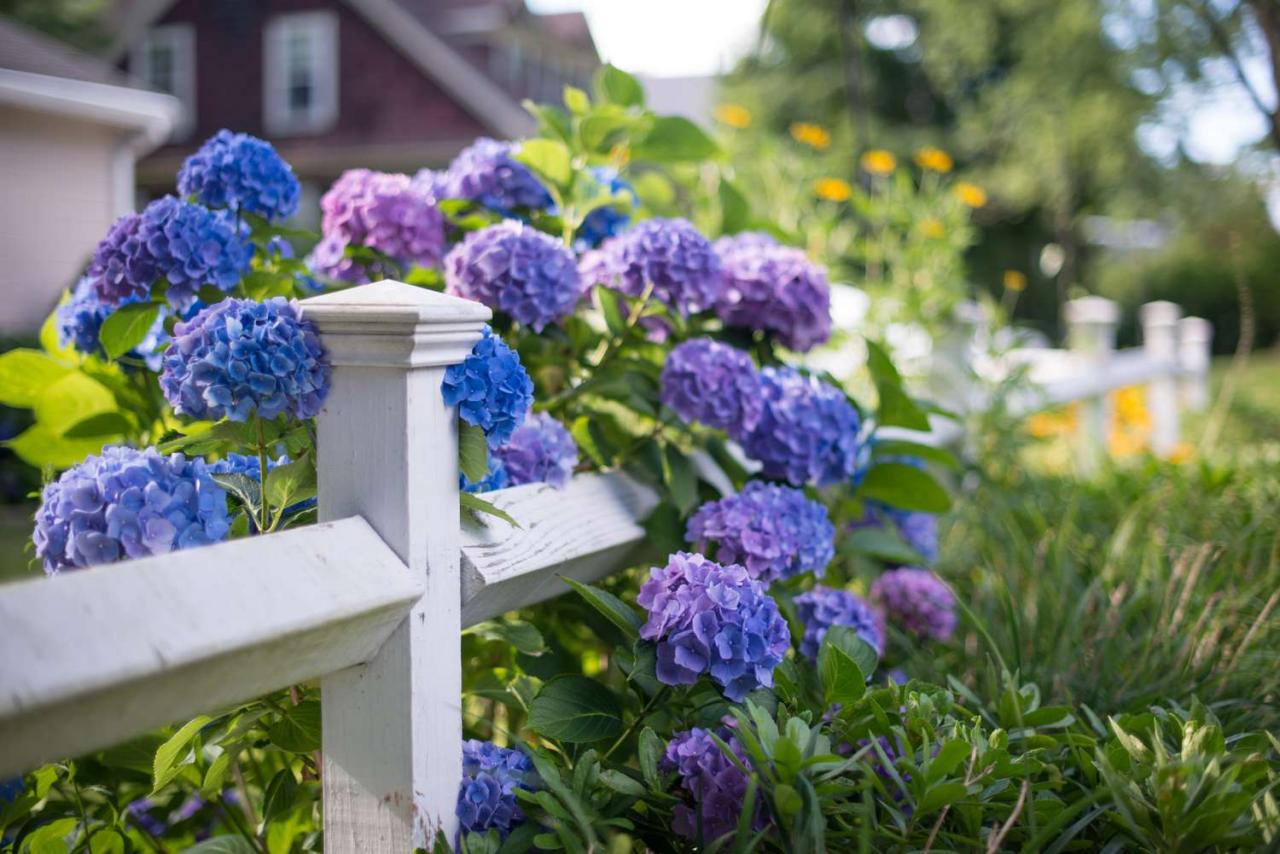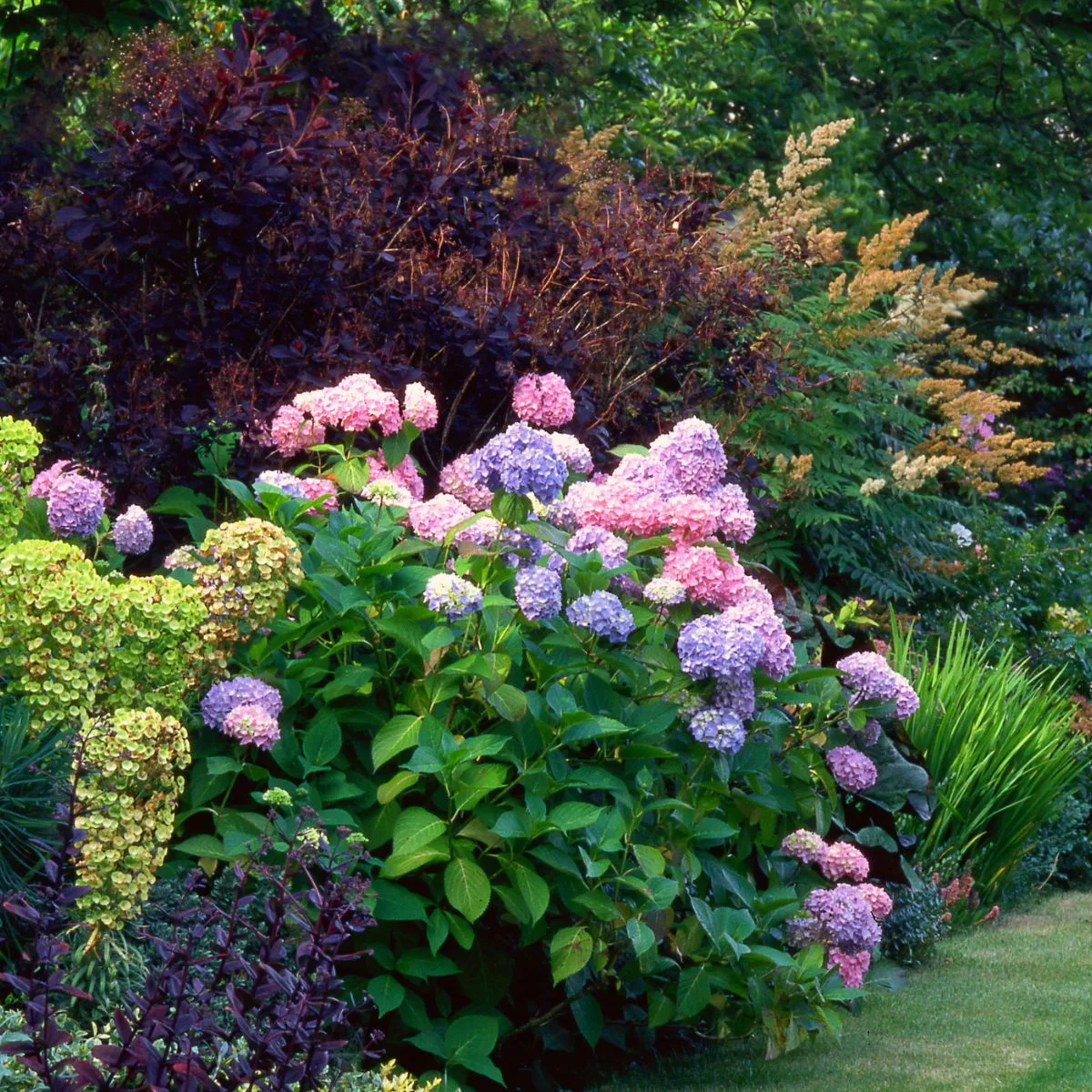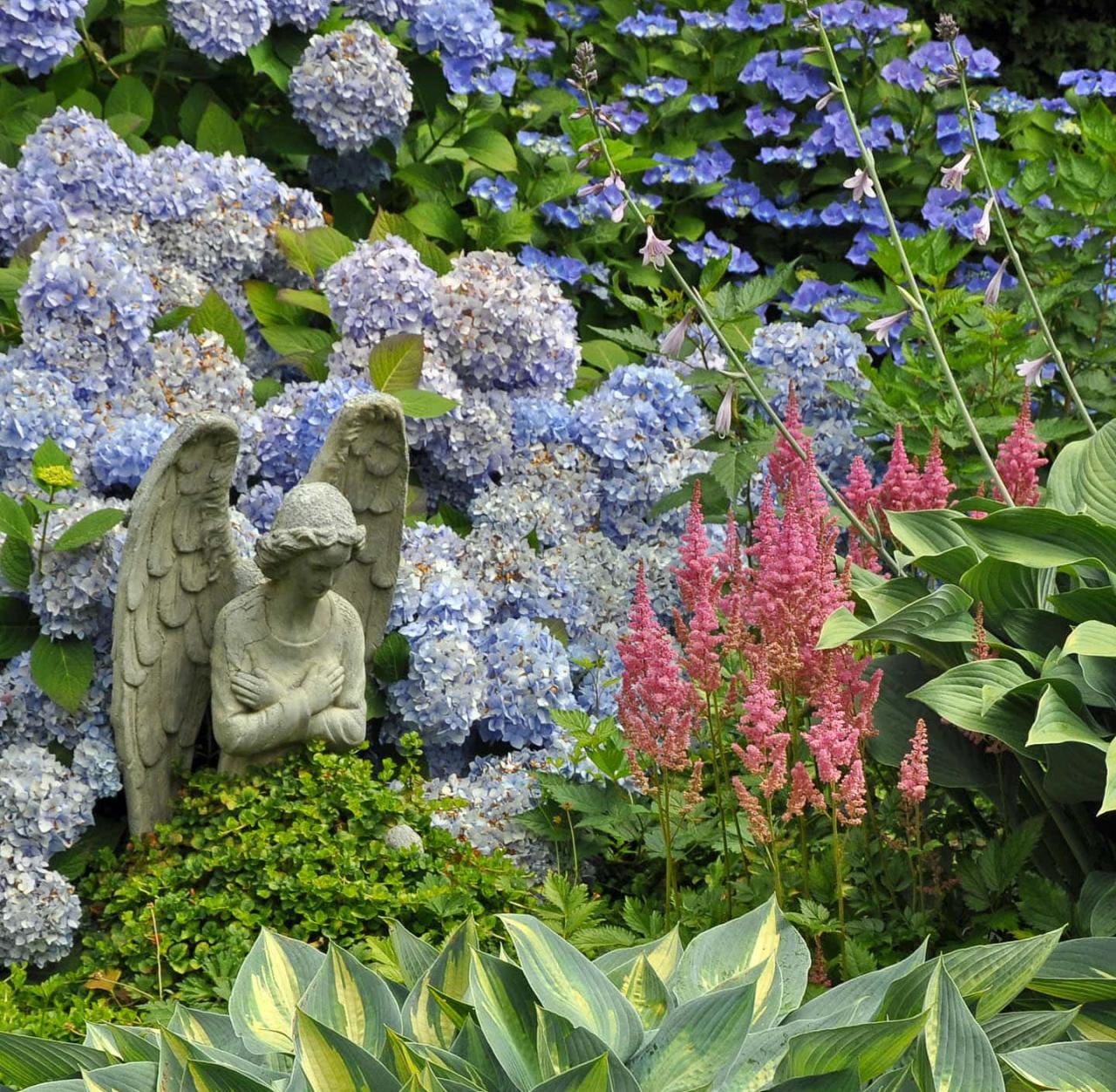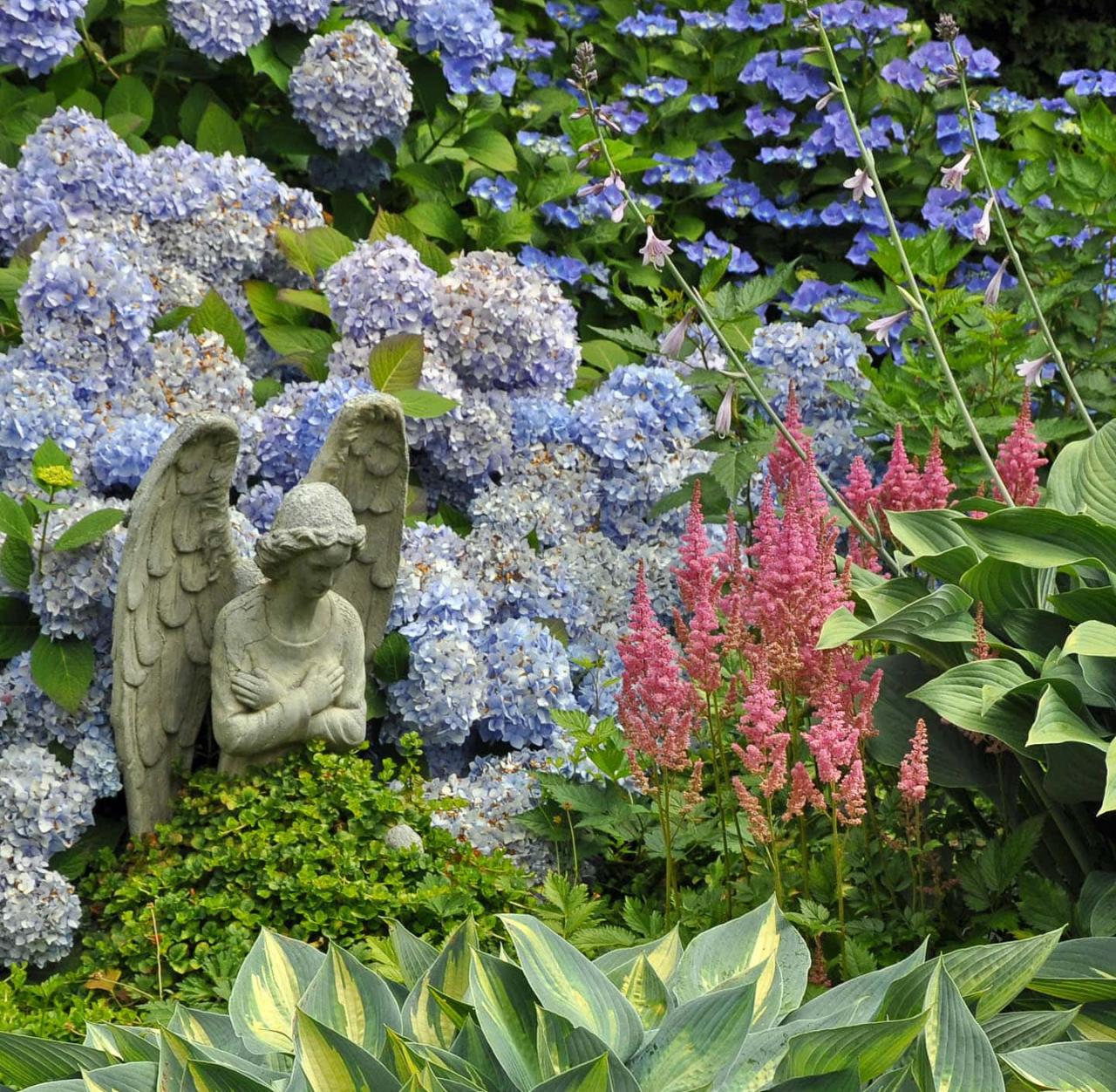How to Use Companion Plants to Prevent Hydrangea Diseases is a powerful strategy that harnesses the natural world to protect your beloved hydrangeas from common ailments. By understanding the principles of companion planting, you can create a thriving ecosystem that supports healthy growth and deters disease.
This approach involves carefully selecting and arranging plants that benefit each other, fostering a natural balance that discourages pests and pathogens. This article delves into the science behind companion planting, explores the specific diseases that threaten hydrangeas, and provides a comprehensive guide to choosing and implementing effective companion plants for a healthier, more vibrant garden.
Companion planting offers a holistic approach to gardening, promoting biodiversity and reducing reliance on chemical interventions. By strategically placing plants that complement each other, you can create a harmonious environment that thrives on natural interactions. This method not only safeguards your hydrangeas from diseases but also enhances the overall health and beauty of your garden.
The synergy between plants creates a vibrant and resilient ecosystem, promoting a sustainable and rewarding gardening experience.
Understanding Companion Planting

Companion planting is a gardening technique that involves growing different plant species together to enhance their growth and health. The practice is based on the idea that certain plant combinations can create a mutually beneficial environment, promoting pest control, attracting beneficial insects, and improving soil health.
The Principles Behind Companion Planting
Companion planting works by leveraging the natural interactions between plants. Some plants release chemicals that repel pests, while others attract beneficial insects that prey on harmful pests. Certain plants can also improve soil fertility by fixing nitrogen or adding organic matter.
Benefits of Companion Planting for Hydrangeas
Companion planting can offer several benefits for hydrangeas, including:* Pest Control:Certain companion plants can deter pests that commonly attack hydrangeas, such as aphids, spider mites, and Japanese beetles.
Disease Prevention
Companion plants can create a healthier microclimate for hydrangeas, reducing the risk of fungal diseases.
Choosing companion plants for your hydrangeas can not only enhance the beauty of your garden but also offer a natural defense against diseases. Some perennials, like lavender or yarrow, attract beneficial insects that prey on pests that can harm your hydrangeas.
For inspiration on choosing the perfect companions, check out this article on Best Perennials to Plant With Hydrangeas for Year-Round Color. By creating a diverse and healthy ecosystem, you can help your hydrangeas thrive and stay disease-free.
Improved Soil Health
Some companion plants can enhance soil structure and nutrient availability, providing hydrangeas with a more fertile growing environment.
Creating a Healthy Microclimate for Hydrangeas
Companion plants can help create a healthier microclimate for hydrangeas by:* Providing Shade:Tall companion plants can provide shade for hydrangeas, protecting them from excessive sun exposure, which can stress the plants and make them more susceptible to diseases.
When it comes to companion planting for hydrangeas, choosing plants that deter pests and diseases is key. This not only helps prevent problems like powdery mildew but also creates a beautiful, cohesive landscape. For a visually striking contrast, consider pairing your hydrangeas with ornamental grasses, as outlined in this helpful guide, How to Pair Hydrangeas With Grasses for Stunning Contrast.
Grasses not only offer a different texture and height but can also help to improve soil drainage, which is beneficial for hydrangeas that prefer well-drained soil.
Improving Air Circulation
Plants with different heights and growth habits can improve air circulation around hydrangeas, reducing humidity and the risk of fungal diseases.
Attracting Beneficial Insects
Companion plants that attract beneficial insects, such as ladybugs and lacewings, can help control pest populations and promote a healthier ecosystem.
Companion Plants for Hydrangeas
Here are some examples of companion plants that can benefit hydrangeas:
- Lavender:Lavender’s fragrant flowers repel aphids and other pests, while its strong scent can also mask the scent of hydrangeas, making them less attractive to pests.
- Rosemary:Rosemary is a strong-scented herb that repels aphids, whiteflies, and other pests. It also attracts beneficial insects like ladybugs and lacewings.
- Marigolds:Marigolds are known for their ability to repel nematodes, tiny worms that can damage hydrangea roots.
- Garlic:Garlic’s pungent odor can repel a variety of pests, including aphids, spider mites, and Japanese beetles.
- Chives:Chives are a good companion plant for hydrangeas, as they attract beneficial insects and repel aphids.
Hydrangea Diseases and Their Causes

Hydrangeas, with their vibrant blooms and lush foliage, are beloved additions to gardens worldwide. However, these beautiful plants are susceptible to various diseases that can hinder their growth and diminish their aesthetic appeal. Understanding the causes of these diseases is crucial for implementing effective prevention strategies.
Common Hydrangea Diseases
Hydrangeas are prone to several diseases, each with its unique characteristics and contributing factors. Some of the most prevalent diseases include:
- Powdery Mildew:This fungal disease manifests as a white, powdery coating on the leaves and stems of hydrangeas. It thrives in humid conditions and can cause leaf distortion and premature defoliation.
- Leaf Spot:Various fungal pathogens cause leaf spot, resulting in brown or black spots on the leaves. These spots can coalesce, leading to leaf drop and reduced plant vigor.
- Root Rot:Caused by soilborne fungi, root rot affects the root system, causing wilting, yellowing, and stunted growth. Overwatering, poor drainage, and compacted soil contribute to root rot.
Environmental Factors Contributing to Hydrangea Diseases
Several environmental factors can increase the susceptibility of hydrangeas to diseases:
- Humidity:High humidity creates favorable conditions for fungal growth, promoting diseases like powdery mildew and leaf spot.
- Temperature:Extreme temperatures, both hot and cold, can weaken hydrangeas, making them more susceptible to diseases.
- Soil Conditions:Poorly drained soil, compacted soil, and excessive moisture can create an environment conducive to root rot.
Companion Plants to Mitigate Disease Risk
Companion planting involves strategically placing different plant species together to create a mutually beneficial environment. Companion plants can help reduce hydrangea diseases by:
- Improving Air Circulation:Plants with upright growth habits, such as sunflowers or lavender, can improve air circulation around hydrangeas, reducing humidity and minimizing fungal growth.
- Enhancing Soil Drainage:Companion plants with deep root systems, like alliums or chives, can help improve soil drainage, reducing the risk of root rot.
- Repelling Pests:Certain companion plants, such as marigolds or garlic, can deter pests that can weaken hydrangeas and make them more vulnerable to diseases.
Choosing Companion Plants for Disease Prevention
Companion planting is a valuable technique for enhancing the health and resilience of hydrangeas. By strategically placing specific plants near hydrangeas, you can leverage their natural properties to deter pests and diseases. These companion plants can act as natural deterrents, attract beneficial insects, or even contribute to soil health, creating a more robust environment for your hydrangeas to thrive.
Companion Plants for Hydrangea Disease Prevention
Selecting the right companion plants for your hydrangeas requires understanding their specific benefits and how they contribute to disease prevention. Here’s a table showcasing some effective companion plants and their advantages:
Companion Plant |
Benefits |
Diseases Prevented |
Notes |
|---|---|---|---|
Rosemary (Salvia rosmarinus) |
Repels insects, improves soil drainage, and possesses antifungal properties. |
Powdery mildew, leaf spot, and fungal root diseases. |
Rosemary’s strong scent deters insects, while its aromatic oils have antifungal effects. |
Lavender (Lavandula angustifolia) |
Attracts beneficial insects, repels pests, and has antifungal properties. |
Powdery mildew, aphids, and spider mites. |
Lavender’s fragrant flowers attract pollinators and beneficial insects that prey on pests. |
Garlic (Allium sativum) |
Repels pests, improves soil health, and has antifungal properties. |
Root rot, aphids, and whiteflies. |
Garlic’s pungent aroma deters pests, and its sulfur compounds can inhibit fungal growth. |
Marigolds (Tagetes spp.) |
Repel nematodes and other pests, attract beneficial insects, and improve soil health. |
Root nematodes, aphids, and whiteflies. |
Marigolds release nematicidal compounds that deter nematodes, and their bright flowers attract beneficial insects. |
These companion plants offer a natural and sustainable approach to managing hydrangea diseases, promoting healthy growth and vibrant blooms.
Planting and Maintaining Companion Plants

Once you’ve selected your companion plants, it’s time to put them in the ground. Planting and maintaining them correctly will ensure they thrive and provide maximum benefits to your hydrangeas.
Planting Companion Plants
Proper spacing is crucial for the health of both the hydrangeas and companion plants. Ensure enough room for each plant to grow without competing for resources like sunlight, water, and nutrients.
- Determine the mature size of both the hydrangea and the companion plant.Consult plant labels or online resources for information on mature height and spread.
- Plan the spacing accordingly.Generally, allow 1-2 feet between hydrangeas and companion plants. Smaller companion plants may be spaced closer together.
- Dig planting holes twice as wide and as deep as the root ball of the companion plant.This allows for better root establishment.
- Amend the soil with compost or other organic matter.This improves drainage and nutrient availability.
- Place the companion plant in the hole, ensuring the top of the root ball is level with the soil surface.Backfill the hole with soil, gently firming it around the roots.
- Water thoroughly after planting.This helps settle the soil and promotes root growth.
Maintaining Companion Plants
Companion plants, like hydrangeas, require regular care to thrive. This includes proper watering, fertilization, and pest control.
- Water regularly, especially during dry periods.Companion plants need consistent moisture, but avoid overwatering, which can lead to root rot.
- Fertilize companion plants according to their specific needs.Use a balanced fertilizer or organic matter to provide essential nutrients.
- Monitor for pests and diseases.Identify and treat any problems promptly to prevent them from spreading.
- Remove weeds regularly.Weeds compete for resources and can harbor pests and diseases.
Observing and Monitoring
Regular observation is essential for maintaining the health of both your hydrangeas and companion plants. Early detection of any problems can prevent them from escalating and causing significant damage.
- Inspect hydrangeas and companion plants for signs of disease.Look for discoloration, wilting, spots, or other unusual symptoms.
- Check for pest infestations.Look for insects, mites, or other pests on the plants, as well as evidence of their feeding activity.
- Monitor the growth and health of both hydrangeas and companion plants.Note any changes in growth rate, leaf color, or overall vigor.
Benefits of Companion Planting for Hydrangeas
Companion planting, the practice of growing different plant species together to enhance their growth and health, can be a valuable strategy for hydrangea care. By strategically selecting companion plants, you can create a harmonious ecosystem that promotes hydrangea vigor, reduces disease susceptibility, and enhances the overall aesthetic appeal of your garden.
Improved Plant Health and Vigor, How to Use Companion Plants to Prevent Hydrangea Diseases
Companion plants can significantly improve the health and vigor of hydrangeas by providing several benefits:
- Enhanced Soil Fertility:Some companion plants, such as legumes (e.g., beans, peas), can fix nitrogen from the air and enrich the soil, providing essential nutrients for hydrangeas.
- Improved Drainage:Companion plants with deep root systems, like alliums (e.g., onions, garlic), can improve soil drainage, preventing hydrangea roots from becoming waterlogged and susceptible to disease.
- Pest Control:Certain companion plants, such as herbs like rosemary and thyme, can deter pests that commonly attack hydrangeas, such as aphids and spider mites.
- Attracting Beneficial Insects:Companion plants like yarrow and dill attract beneficial insects, such as ladybugs and lacewings, which prey on harmful pests, reducing the need for chemical pesticides.
Reduced Disease Incidence
Companion planting can also play a significant role in reducing the incidence of hydrangea diseases:
- Disease Resistance:Some companion plants, like calendula and chamomile, are known to possess antifungal properties that can help suppress fungal diseases common in hydrangeas, such as powdery mildew and leaf spot.
- Improved Air Circulation:Companion plants with different growth habits can create better air circulation around hydrangeas, reducing the humidity that can promote fungal growth.
- Reduced Stress:Companion plants can help reduce stress on hydrangeas, making them more resilient to disease. For example, planting lavender near hydrangeas can create a calming atmosphere and potentially reduce stress-induced susceptibility to diseases.
Enhanced Aesthetic Appeal
Companion planting can enhance the aesthetic appeal of your hydrangea garden by creating a more diverse and visually interesting landscape:
- Complementary Colors and Textures:Selecting companion plants with contrasting or complementary colors and textures can create a visually stunning display. For instance, planting a vibrant red salvia alongside a pink hydrangea can create a striking contrast.
- Extended Bloom Time:Choosing companion plants with different bloom times can extend the flowering season in your garden, providing continuous color and interest throughout the year.
- Variety and Interest:Companion planting adds variety and interest to your hydrangea garden, creating a more dynamic and engaging landscape. You can incorporate different plant heights, shapes, and foliage textures to create a layered and captivating effect.
Real-Life Examples of Companion Planting Success
- Gardeners have reported that planting marigolds near hydrangeas has effectively reduced the incidence of root rot and fungal diseases.The marigolds release compounds that suppress harmful soilborne pathogens.
- Incorporating lavender into a hydrangea garden has been shown to deter aphids and other pests, while also adding a fragrant element to the landscape.The lavender’s strong scent repels insects, reducing the need for chemical pest control.
- Planting alliums (onions, garlic) near hydrangeas can improve soil drainage and discourage fungal diseases.The alliums release compounds that have antifungal properties, creating a healthier environment for hydrangeas.
Tips for Beginners
- Research Companion Plants:Before planting companion plants, research their compatibility with hydrangeas and their specific benefits.
- Start Small:Begin with a small area and experiment with different companion plants to see what works best for your garden conditions.
- Observe and Adjust:Monitor the growth and health of your hydrangeas and companion plants, and adjust your planting strategy as needed.
Conclusion
By embracing the principles of companion planting, you can unlock a world of possibilities for cultivating healthy and vibrant hydrangeas. This natural approach not only safeguards your plants from disease but also enriches your garden with a vibrant tapestry of life.
With a little planning and observation, you can create a thriving ecosystem that promotes biodiversity, reduces reliance on chemical interventions, and rewards you with a flourishing garden filled with the beauty of healthy hydrangeas.
Questions and Answers: How To Use Companion Plants To Prevent Hydrangea Diseases
What are the most common diseases that affect hydrangeas?
Common hydrangea diseases include powdery mildew, leaf spot, root rot, and blight. These diseases can cause a range of symptoms, from discolored leaves to stunted growth and even plant death.
Can companion plants completely eliminate hydrangea diseases?
While companion plants can significantly reduce the risk of disease, they are not a guaranteed cure. Proper sanitation, watering practices, and overall plant health are essential for preventing and managing diseases.
How often should I check my hydrangeas for signs of disease?
Regularly inspect your hydrangeas for any signs of disease, such as discolored leaves, wilting, or unusual spots. Early detection is crucial for effective treatment and prevention.
